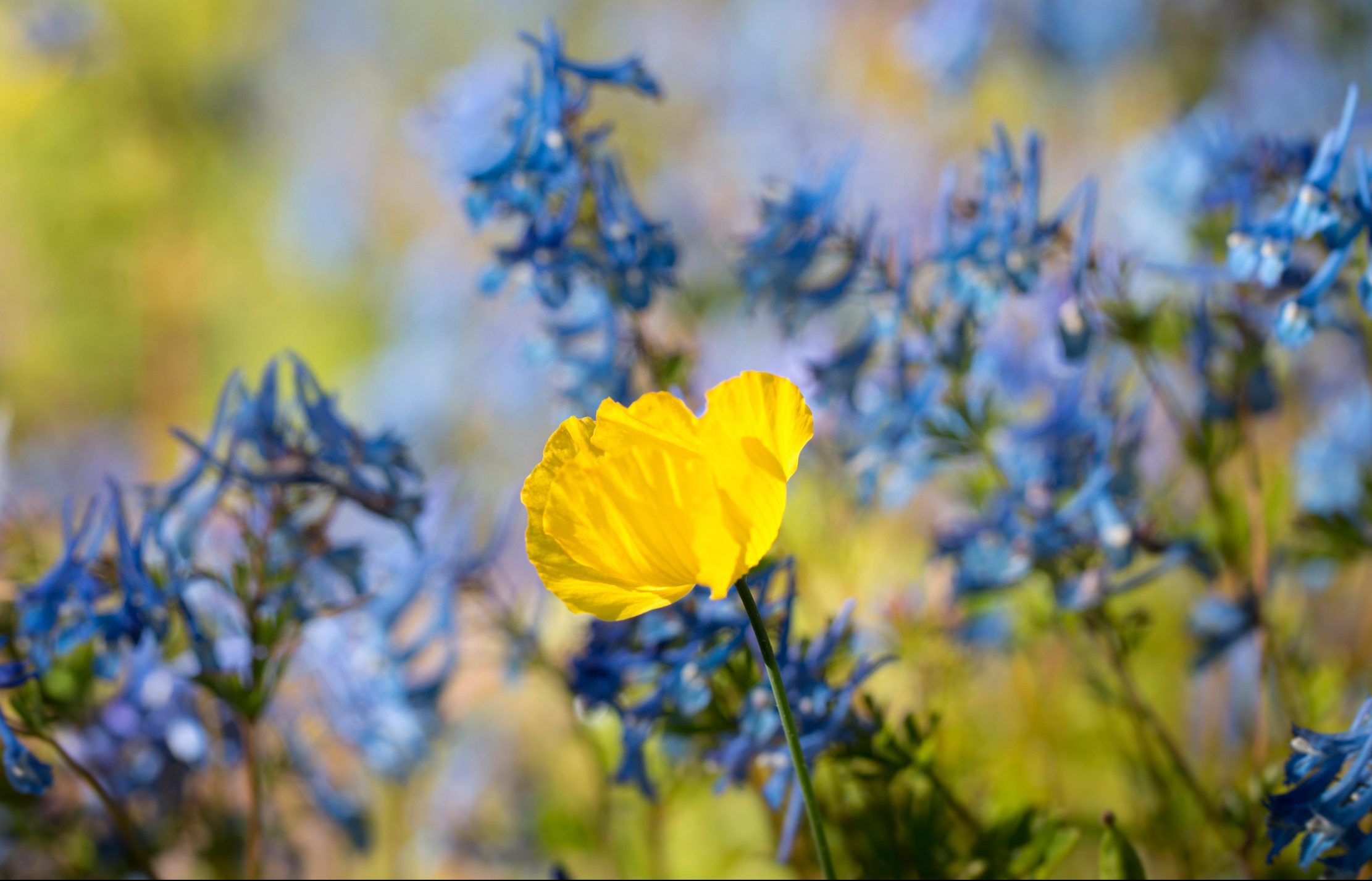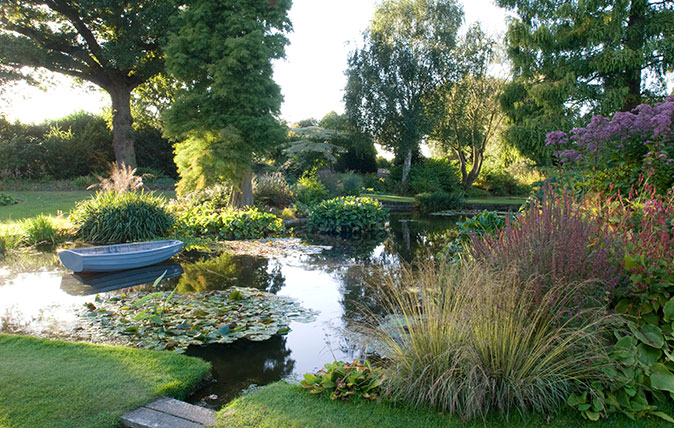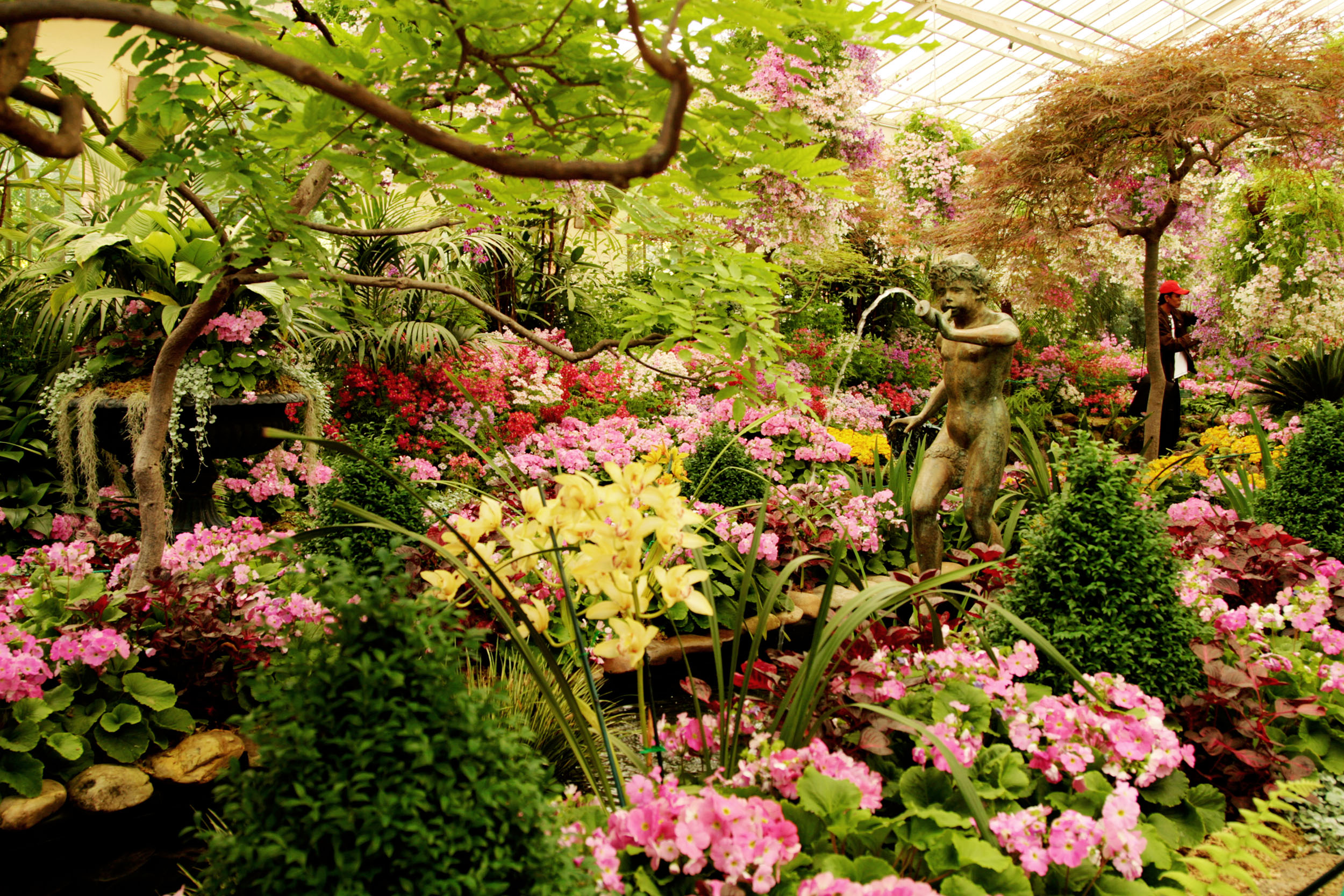Alan Titchmarsh: The weeds I welcome with open arms
Our columnist Alan Titchmarsh used to spend hours ridding his garden of anything he hadn't planted himself. These days he sees things differently — and even welcomes their arrival.


When, as a gardener, you spend most of your time trying to make conditions as propitious as possible for the growth of plants, there is a feeling of Schadefreude when they grow in spite of your ministrations rather than because of them.
Sometimes, such willingness to thrive is a real pain — those ever-increasing rivulets of mind-your-own-business running riot between paving slabs and then colonising an adjoining lawn — but, on occasions, these ‘happy accidents’ can be enjoyed and even encouraged if they add to a garden’s interest.
The knapped flint wall surrounding my Hampshire garden is a little like the Forth Railway Bridge when it comes to the repairs that seem necessary after every spell of winter frost. Where we’re slow to act with the mortar, the pink valerian, Centranthus ruber, will seed itself into the crevices and I’m loath to uproot it in the interests of re-pointing when it looks so delightful.
'I’ve come to admire and encourage the brave beauties that are happy to decorate my garden, even if I don’t remember inviting them'
Like the wallflower, which earned its common name by virtue of its ability to grow in the crevices between stones and bricks, it’s an embellishment to my garden rather than a weed.
But then, a weed, as we’re frequently told, is simply a plant growing where it isn’t wanted — otherwise, it’s a wildflower. The trick is to be open-minded about such adventurous invaders and to consider whether they add to the garden’s interest.
If they do, stay your hand, stop being quite so controlling and just enjoy their willingness to thrive. You might even consider introducing a few of them in the hope that they won’t be so cussed as to turn up their toes and cock a snook at your intervention.
In my Isle of Wight garden, I celebrate the ability of that little daisy Erigeron karvinskianus to push up at the edges of my gravel paths. I first saw it in Christopher Lloyd’s garden at Great Dixter, where it colonised the crevices between Yorkstone paving slabs. In those days, I suspect I was a tidier-minded gardener than I am now and I thought it might be just a little too free with its affections — and seeds — to release in my own garden.
Exquisite houses, the beauty of Nature, and how to get the most from your life, straight to your inbox.
Now, I rejoice in its ability to thrive on next to nothing and I let it push up wherever and whenever it wants. I simply scissor back the clumps in winter and they push up afresh each spring.

The Welsh poppy, Meconopsis cambrica, does the same and, provided you aren’t offended by the bilious yellow shade of its tissue-paper-thin flowers, it brings brightness to stone walls, gravel paths and other places deemed too inhospitable for most cultivated plants.
In damp and shady corners, there are certain ferns that will sprout uninvited. The maidenhair spleenwort (Asplenium trichomanes) and the wall-rue spleenwort (Asplenium ruta-muraria) are two of the daintiest and commonest pop-up plants in such conditions. If you’re keen to introduce them to a suitable spot, then acquire some ripe spore-bearing fronds and rub them over the surface of the wall. You may be lucky; otherwise, leave the job to Nature.
The larger hart’s-tongue fern (Asplenium scolopendrium), with its shiny green razor-strop fronds, might seem too fleshy to be able to survive in such a soil-starved spot, but survive it will, sending its roots deep into the shady side of the wall for what passes as sustenance.
Not all crevice dwellers are British natives. Geranium maderense, from Madeira, surprises me in my island garden by erupting not only between other plants in a sunny border, but also on the gravel paths, where compacted scalpings (or Type 1 as builders prefer to call it) forms the underlayer. The seeds fall where they will and the young plants that emerge have been granted the ability to withstand a variety of conditions provided drainage is good and they’re not chilled to the marrow by severe winters (as they are in Hampshire).
Geranium canariense is tougher and both it and G. maderense delight in a sunny, sheltered spot, sending up a mound of filigree leaves topped in summer by vast heads of warm-pink flowers that bring a touch of the Mediterranean to any garden where they can come through the winter with the bulk of their rosette intact.
I draw the line at groundsel growing out of my walls and the gaps between paving stones, but I’ve come to admire and encourage the other brave beauties that are happy to decorate my garden, even if I don’t remember inviting them.
‘My Secret Garden’ by Alan Titchmarsh is out now

Alan Titchmarsh: The poetic pleasure of plant names
Our gardening expert on the days spent learning the names of some of the most obscure plants in Britain.

Alan Titchmarsh: How to keep a perfect pond
Alan Titchmarsh says that now is the time to clear out the weeds and keep your pond in top condition

Credit: Moment Editorial/Getty
Alan Titchmarsh: Why I've decided that life's too short to keep growing the same old things in my greenhouse
Alan Titchmarsh's greenhouse has become a bit predictable – but he's now got big plans to mix things up.
Alan Titchmarsh is a gardener, writer, novelist and broadcaster.
